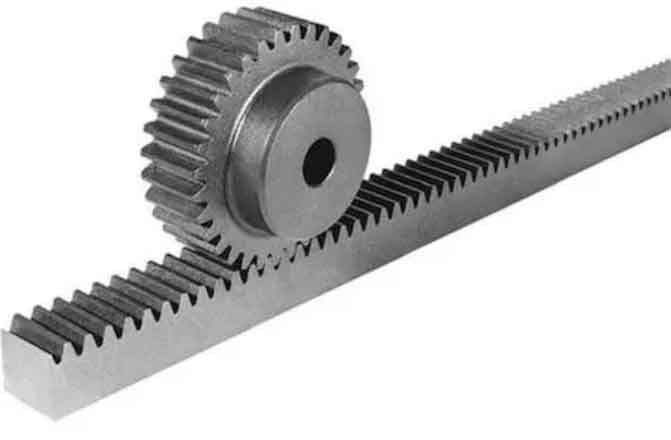
Rack and pinion gear mechanisms are highly effective in enabling smooth and controlled motion in various applications. The unique design and operation of these mechanisms contribute to their ability to provide precise linear motion, accurate positioning, and efficient power transmission. Let’s explore how rack and pinion gear mechanisms enable smooth and controlled motion:
1. Direct Contact and Engagement:
Rack and pinion gear mechanisms operate through direct contact and engagement between the teeth of the rack and pinion. This direct interaction ensures a positive and immediate transfer of motion, resulting in smooth and responsive movement. Unlike other motion transmission mechanisms that may introduce backlash or play, the direct contact of rack and pinion gears minimizes any delays or inaccuracies in motion transfer.
2. Precise Positioning and Accuracy:
The tooth engagement in rack and pinion gear mechanisms allows for precise positioning and accurate control of linear motion. The closely meshed teeth create a tight fit, ensuring minimal play and backlash. As a result, the mechanism can achieve high positional accuracy and repeatability, making it suitable for applications that require precise positioning or motion control.
3. Low Friction and Efficient Power Transmission:
Rack and pinion gear mechanisms offer low friction and efficient power transmission. The gear teeth are designed to minimize frictional losses, resulting in efficient power transfer from the pinion to the rack. The direct contact between the teeth allows for the distribution of load over a larger contact area, reducing wear and ensuring a more even distribution of forces. This efficient power transmission enables smooth and controlled motion while optimizing energy efficiency.
4. Smooth Acceleration and Deceleration:
Rack and pinion gear mechanisms facilitate smooth acceleration and deceleration due to their direct engagement. As the pinion gear rotates, the teeth smoothly engage with the rack, enabling gradual and controlled changes in speed and direction. This characteristic is particularly beneficial in applications that require precise and gentle motion, such as robotic systems or machinery for delicate processes.
5. Minimal Vibration and Noise:
The direct engagement and tight fit of rack and pinion gears contribute to minimal vibration and noise during operation. The absence of backlash and the smooth transfer of motion result in reduced vibration and noise levels, providing a quieter and more stable operation. This feature is advantageous in applications that require low noise emissions, such as in laboratories or noise-sensitive environments.
6. High-Speed Capability:
Rack and pinion gear mechanisms are capable of high-speed operation while maintaining smooth and controlled motion. The direct contact between the teeth and the efficient power transmission allow for rapid acceleration and deceleration, making them suitable for applications that require fast and precise linear motion, such as CNC machines or high-speed robotics.
7. Durability and Longevity:
Rack and pinion gear mechanisms are known for their durability and longevity. The direct tooth engagement and robust design of the gears allow them to withstand high loads, impacts, and frequent use without compromising performance. Proper lubrication and maintenance further contribute to their longevity and reliable operation.
The smooth and controlled motion provided by rack and pinion gear mechanisms makes them a preferred choice in various applications where precise positioning, accurate motion control, and efficient power transmission are essential. Whether in robotics, CNC machines, material handling systems, or other applications, rack and pinion gear mechanisms offer reliable and responsive linear motion with excellent performance characteristics.
